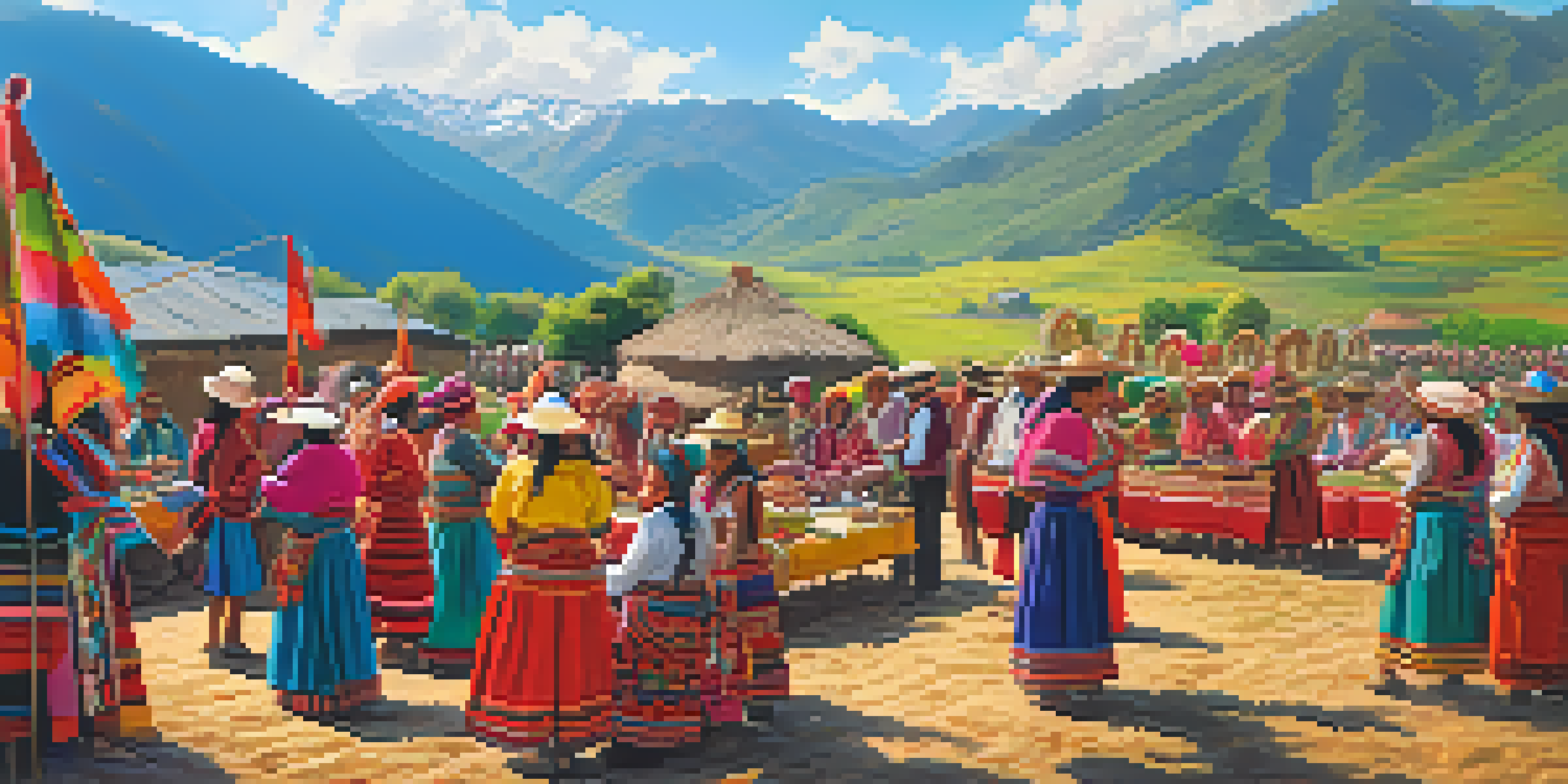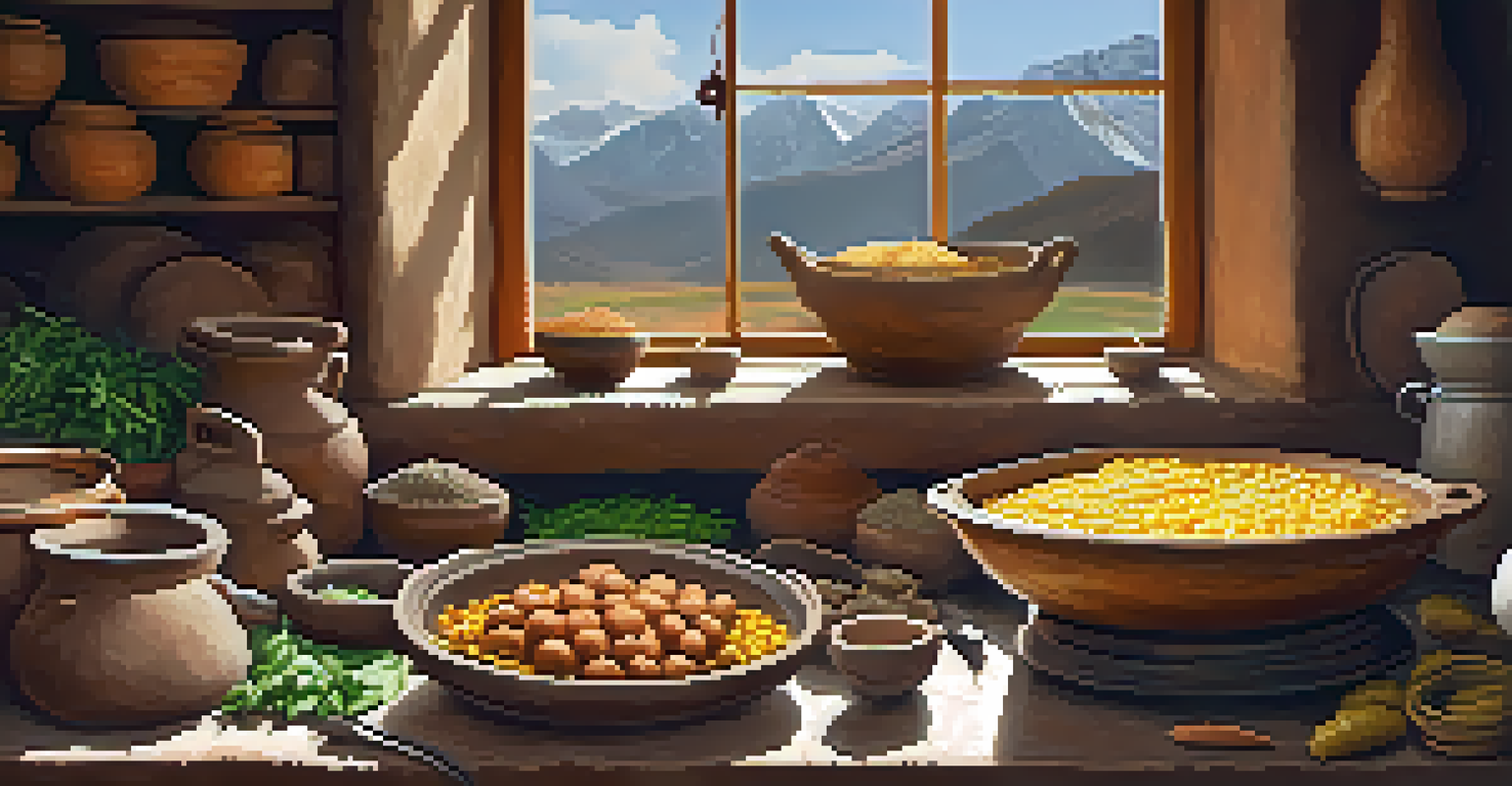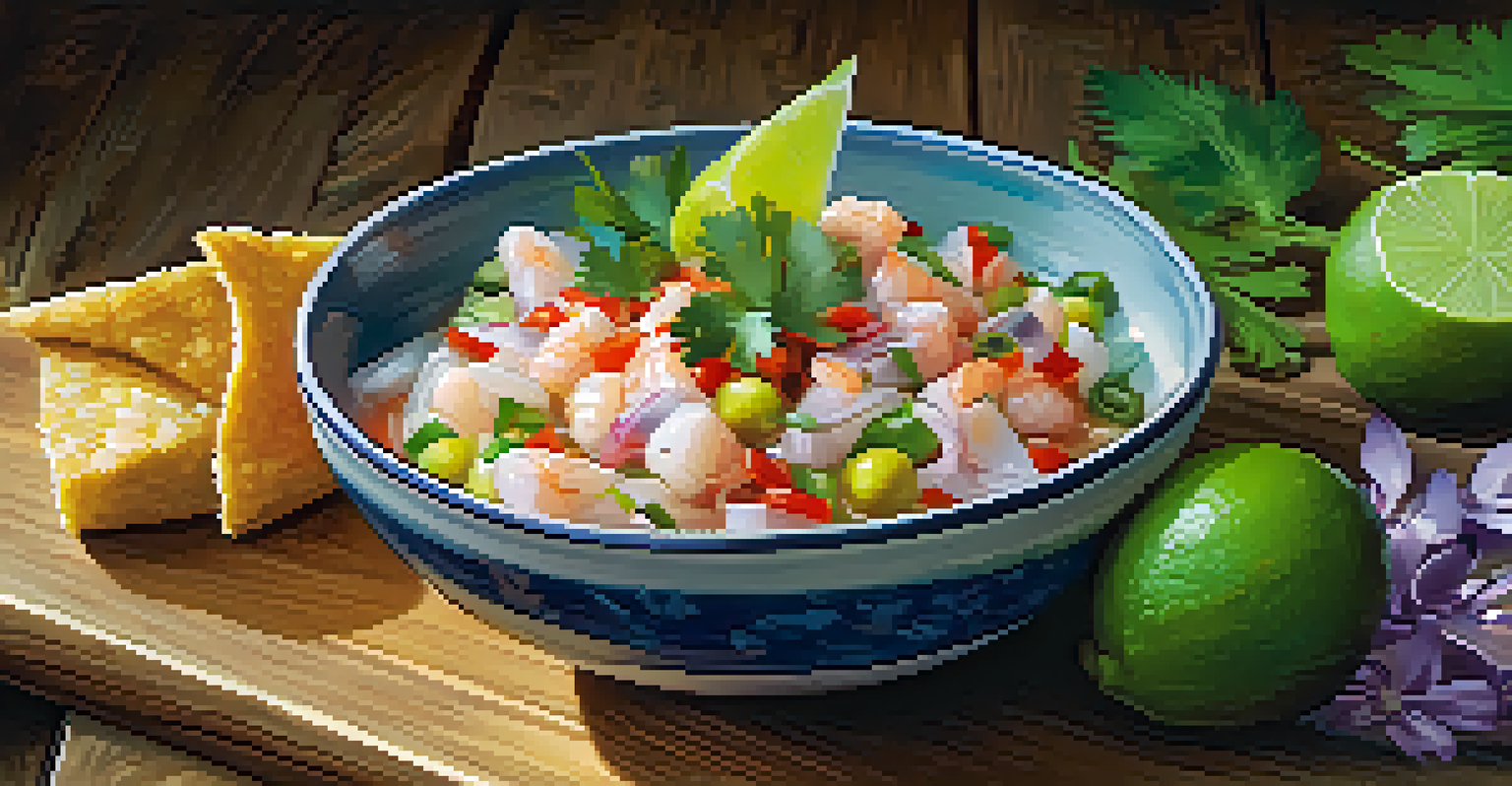Exploring Indigenous Contributions to Peruvian Culinary Heritage

The Rich Tapestry of Peruvian Indigenous Cultures
Peru is a land of diverse Indigenous cultures, each with its unique culinary traditions. From the high Andes to the Amazon rainforest, these communities have cultivated a rich variety of ingredients and cooking methods. This tapestry of cultures has played a crucial role in shaping Peru's culinary identity, contributing to its reputation as a gastronomic hotspot.
Food is our common ground, a universal experience.
The Quechua and Aymara peoples, for instance, have long celebrated the use of native crops like quinoa and potatoes. These ingredients are not just staples; they are deeply woven into the social and cultural fabric of their communities. The respect for these traditional foods is evident in how they’re prepared and enjoyed during festivals and daily meals.
By exploring these Indigenous contributions, we gain insight into the sustainable farming practices and culinary techniques that have been passed down through generations. This understanding enriches our appreciation for Peruvian cuisine and highlights the importance of preserving these cultural legacies.
Key Ingredients: The Heart of Indigenous Cuisine
At the core of Indigenous Peruvian cuisine are ingredients that have been cultivated for thousands of years. Staples such as maize, potatoes, and various native herbs form the foundation of many traditional dishes. Each ingredient carries its own history and significance, often tied to local customs and beliefs.

Take the potato, for example; its origins trace back to the Andean highlands where it was first domesticated. With over 4,000 varieties available, potatoes showcase the incredible biodiversity of Peru. Indigenous communities have not only preserved these varieties but have also developed unique ways to prepare them, from baked to fermented dishes.
Indigenous Ingredients Define Cuisine
Peruvian Indigenous cultures contribute unique ingredients like potatoes and maize, which form the foundation of traditional dishes.
Similarly, maize holds a sacred place in many Indigenous cultures, symbolizing life and fertility. It is used in countless dishes, such as tamales and chicha, a traditional fermented beverage. These ingredients reflect a deep connection to the land and illustrate the sophistication of Indigenous agricultural practices.
Traditional Cooking Techniques Passed Down Through Generations
Indigenous cooking techniques are as diverse as the cultures themselves. Many communities still rely on traditional methods, such as cooking in underground ovens called 'huatias' or using clay pots over open flames. These techniques not only enhance the flavors of the food but also connect people to their ancestors and traditions.
To be a successful farmer, you have to be a scientist, a businessman, a historian, and a poet.
For instance, the practice of using 'pachamanca' involves cooking meats and vegetables in a pit lined with hot stones, creating a unique smoky flavor. This communal cooking method not only brings families together but also celebrates the earth's bounty, reflecting the Indigenous belief in living harmoniously with nature.
By embracing these traditional methods, contemporary chefs in Peru are paying homage to Indigenous heritage while showcasing the depth of flavors that arise from these techniques. This fusion of old and new is essential in keeping culinary traditions alive and relevant in today's food scene.
Celebrating Festivals: Food, Culture, and Community
Festivals in Indigenous communities are vibrant celebrations where food plays a central role. Events like Inti Raymi or the Feast of the Sun highlight the connection between agriculture, spirituality, and community bonding. Traditional dishes prepared during these festivals are often laden with symbolism, representing gratitude to the earth and the ancestors.
During these gatherings, visitors can experience the rich diversity of Peruvian cuisine, from ceremonial dishes to street food offerings. It’s a time when families gather to share not only meals but also stories, music, and dance, reinforcing social ties and cultural identity.
Traditional Techniques Enhance Flavors
Cooking methods such as 'pachamanca' and 'huatias' not only impart distinct flavors but also connect communities to their ancestral heritage.
These festivals are more than just culinary showcases; they are a testament to the resilience and vibrancy of Indigenous cultures. By participating in these celebrations, we foster a greater appreciation for the historical and cultural significance of the foods we often take for granted.
Modern Peruvian Cuisine: A Fusion of Old and New
In recent years, Peruvian cuisine has gained international recognition, often showcasing a beautiful blend of Indigenous ingredients and contemporary culinary techniques. Chefs across the country are inspired by traditional flavors while incorporating global influences, creating innovative dishes that tell a story of cultural fusion.
This modern approach doesn’t erase Indigenous roots; instead, it elevates them, allowing these ancient flavors to shine on the global stage. For example, dishes like ceviche are now celebrated worldwide, yet they remain deeply connected to the coastal communities that perfected them centuries ago.
By spotlighting Indigenous contributions within modern cuisine, chefs and food enthusiasts are not only preserving these traditions but also advocating for the importance of sustainability and local sourcing. This movement encourages consumers to appreciate the journey of their food from the land to the plate.
The Role of Indigenous Knowledge in Sustainable Practices
Indigenous communities have long understood the importance of sustainable agricultural practices, often relying on techniques that protect the environment. Crop rotation, companion planting, and natural pest control are just a few methods that have been used for generations, ensuring the land remains fertile and productive.
This deep-rooted knowledge is becoming increasingly relevant in today’s world, as more people seek sustainable food sources. By learning from Indigenous practices, modern agriculture can adopt methods that benefit both the environment and the local communities.
Sustainability Through Indigenous Practices
Indigenous agricultural techniques promote sustainability and biodiversity, offering valuable lessons for modern farming.
Furthermore, the emphasis on biodiversity in Indigenous farming systems helps preserve unique plant varieties that may be at risk of extinction. By valuing these practices, we not only honor Indigenous heritage but also contribute to the health of our planet.
Preserving Indigenous Culinary Heritage for Future Generations
As the world becomes more globalized, the preservation of Indigenous culinary traditions is increasingly important. Efforts are underway to document traditional recipes, cooking methods, and agricultural practices, ensuring that this invaluable knowledge is not lost. Organizations and community leaders are striving to keep these traditions alive through workshops, cooking classes, and cultural events.
Moreover, there is a growing movement among chefs and food enthusiasts to support Indigenous farmers and local producers. By sourcing ingredients directly from these communities, they are not only promoting sustainable practices but also empowering Indigenous voices within the culinary landscape.

In celebrating Indigenous contributions to Peruvian cuisine, we acknowledge their ongoing influence and foster a greater appreciation for the rich culinary heritage that defines Peru today. This commitment to preservation ensures that future generations can continue to experience and enjoy the flavors and stories that have shaped this vibrant culture.